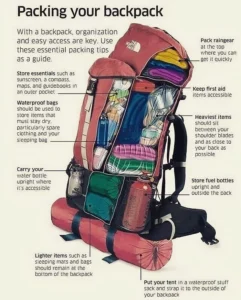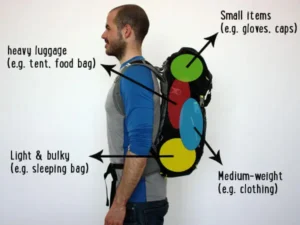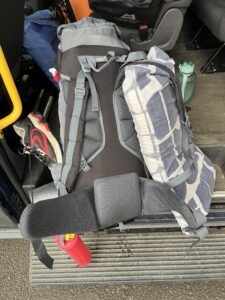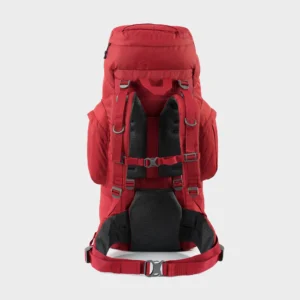It’s important that a Scout knows how to pack their own rucksack, can do it fast, and can find anything inside it – without having to get everything else out. Unfortunately the weather in Scotland isn’t always as kind as it was for most of summer 2025 – if you have to open your bag and churn through your contents in the rain you risk everything getting soaked and ruining your camp. Similarly, if you can find something in your rucksack quickly – ideally just by feel, or you can’t pack it quickly, you risk slowing the rest of the troop down and delaying breaking camp – risking us having much more kit to dry when we get back to the Scout Hall, and people getting cold and damp waiting for you.
The less time we spend sorting kit, the more time we have for fun and adventure. Just as we practice putting up, taking down and packing tents, a good Scout will practice packing their rucksack and sleeping bag and mat at home from time-to-time – making sure they have what they need and know where it is, ready for the next camp. When you can consistently pack your bag for camp, quickly, you’ll know you’ve done everything you can to keep your gear in dry, usable condition.
Here’s a helpful video, aimed at Duke of Edinburgh Award Scheme starters.
There’s no hard and fast rules for packing, but many recommend that to pack a rucksack effectively, keep the heaviest items (like a tent or stove) close to your back and centre, between your shoulder blades, to maintain stability and distribute weight properly. Pack lighter items, like your sleeping bag and spare clothes, at the bottom and around the sides. Store frequently accessed items, such as your rain jacket, map, and snacks, in the top section or external pockets for quick access. Use dry bags or plastic bags to organize your gear and protect it from moisture, and ensure all straps are adjusted for maximum carrying comfort before you start your journey.


You can also take a look at this video for the Glasgow Scout Shop view on packing.
You want to keep your backpack as light as possible, without forgetting any of the essential items. For a multi-day trip, the upper weight guidance should be a maximum of 12kg, but really you want to aim for sub-10kg, and some smaller Scouts may still struggle at that.
A few tips:
- familiarise yourself with a typical kit list (here’s an example)
- get used to having a place for everything, so you can pack from memory
- practice finding particular items from your bag in the dark
- have some spare space – if you can, so you’ve room for carrying patrol kit
- try and have everything inside your bag. If you do have to strap things to the outside of your rucksack, make sure it won’t fall off in the trailer, OR take long to remove when you need it
- ALWAYS pack your own rucksack/bag
- try to be able to carry all your stuff from the minibus to camp in one go. Sometimes – particularly in winter, we have to hike some way from the car park to our site
- pack your bag and take it along to a Scout programme night – ask your leaders and fellow Scouts for advice
How not to pack:

- shoes falling out of small side pockets will get lost/wet
- pillow risks getting damaged and wet
- hanging water bottle will get snagged and risks damage to the bag
- (this hanging bottle, above, leaked all over everyone else’s kit in the minibus!)
What sort of Rucksack does your Scout need?
This is something we get asked quite often. Something with an adjustable back will suit your Scout as they grow. This video is helpful.
For weekend camps, you’ll need something around 60 litres to fit everything inside. For day hikes, you’ll probably not need much more than 25-30 litres, but you’ll find some modern backpacks are designed to compress.
If you time it right, you can get something adjustable for £20-25 (like this). For discount codes and buying tips, see here.
But we urge you to try before you buy. There are some within 48th Fife Scout Group that we may be able to lend you – ask your Volunteer Leadership Team. Some scouts work better with what is effectively a large stuff sack, others do better with more compartments. And comfort and quality can correlate with cost, and sometimes a used but well cared for bag is a better option.

Needing more help? click here to see how to pack a Vango
